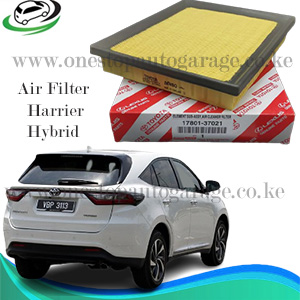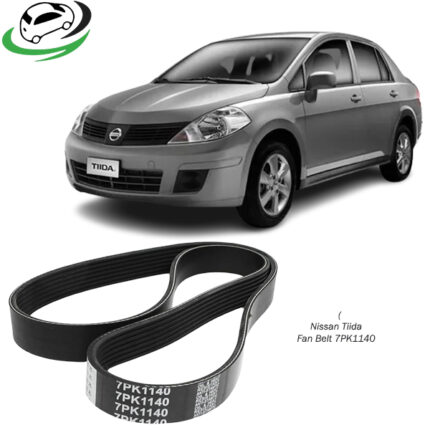Get Toyota Rush Front Shock Mount TSS-J200F in Kenya
The front shock mount is a critical component of a vehicle’s suspension system, providing stability, comfort, and control. Whether you’re a car enthusiast, a mechanic, or just someone interested in how vehicles function, understanding the role of the front shock mount is essential. In this detailed guide, we’ll explore its function, types, installation, maintenance, and common issues—all in a way that’s easy to understand.
What is a Front Shock Mount? 🤔🔧
A front shock mount connects the shock absorber (or strut) to the vehicle’s chassis, ensuring smooth and stable motion. It serves as both a mounting point and a dampening mechanism, reducing vibrations and noise while driving.
Key Functions of the Front Shock Mount:
✔️ Secures the Shock Absorber – Keeps the shock in place and aligned.
✔️ Absorbs Vibrations – Reduces road impacts and prevents excessive shock transmission to the chassis.
✔️ Enhances Steering Stability – Plays a role in keeping the front wheels aligned and stable.
✔️ Dampens Noise – Minimizes road noise and vibrations for a smoother ride.
Types of Front Shock Mounts 🛠️🏎️
Front shock mounts come in different designs, depending on the vehicle type, suspension setup, and driving conditions. Here are the most common types:
1. Rubber Shock Mounts 🏁
- Made of rubber and metal.
- Offers good vibration absorption.
- Found in most standard passenger vehicles.
- Affordable but wears out over time.
2. Polyurethane Shock Mounts 🚙
- Stronger and more durable than rubber.
- Better resistance to wear and tear.
- Provides improved handling but slightly stiffer ride.
- Common in performance-oriented cars.
3. Adjustable Pillow Ball Mounts (Spherical Bearings) 🏎️🔥
- Used in performance and race cars.
- Allows for precise adjustments to camber and caster.
- Provides the best handling, but can be harsh on comfort.
Installation & Replacement Process 🛠️🔩
Replacing a front shock mount requires mechanical skill, proper tools, and safety precautions. Here’s a step-by-step guide:
Tools Needed 🔧
✅ Jack & jack stands
✅ Wrenches & socket set
✅ Spring compressor (for struts)
✅ Torque wrench
✅ Penetrating oil
Step-by-Step Installation 🚗
1️⃣ Lift the Vehicle 🔺
- Securely jack up the car and place it on jack stands.
2️⃣ Remove the Wheel 🚙
- Use a lug wrench to remove the front wheel for better access.
3️⃣ Detach the Shock Absorber or Strut 🔧
- Locate the shock absorber and disconnect it from the lower control arm and upper mount.
4️⃣ Compress the Spring (For Strut Mounts) 🔩
- Use a spring compressor to safely remove tension from the coil spring.
5️⃣ Remove the Old Shock Mount 🚨
- Unbolt and remove the worn-out front shock mount from the assembly.
6️⃣ Install the New Shock Mount 🆕
- Secure the new mount properly and torque the bolts to manufacturer specifications.
7️⃣ Reassemble Everything 🔄
- Reattach the strut/shock, reinstall the wheel, and lower the vehicle.
8️⃣ Test Drive the Vehicle 🚗💨
- Check for any unusual noises, alignment issues, or handling concerns.
Signs of a Bad Front Shock Mount 🚨🚗
Like any car part, shock mounts wear out over time. Here are some signs indicating it’s time for a replacement:
🔹 Clunking or Banging Noises – A loose or broken mount can cause noises when hitting bumps.
🔹 Excessive Vibration – Worn-out rubber dampers can lead to more road vibrations.
🔹 Uneven Tire Wear – Faulty shock mounts can cause misalignment, leading to tire wear issues.
🔹 Poor Steering Response – Damaged mounts affect the steering stability of the vehicle.
🔹 Visible Cracks or Damage – Inspect the mounts for signs of wear, rust, or deformation.
Maintenance Tips for Longer Lifespan 🛠️🔍
Taking care of your front shock mounts can prolong their life and prevent costly repairs. Follow these maintenance tips:
✔️ Inspect Regularly – Check for cracks, wear, or leaks during routine vehicle maintenance.
✔️ Lubricate as Needed – Some mounts (especially performance ones) require periodic lubrication.
✔️ Avoid Rough Roads – Potholes and off-road driving put more strain on shock mounts.
✔️ Replace in Pairs – Always replace both front shock mounts at the same time for even performance.
✔️ Use Quality Parts – Investing in high-quality mounts ensures better durability and performance.
Performance & Aftermarket Upgrades 🏎️🔥
For car enthusiasts looking to enhance handling and performance, aftermarket shock mounts offer upgrades.
Popular Upgrades:
🚗 Adjustable Camber Plates – Allows precise alignment for track and performance cars.
🚙 Reinforced Polyurethane Mounts – Improved durability for off-road or high-performance applications.
🏁 Heavy-Duty Pillow Ball Mounts – Ideal for drifting, autocross, and racing setups.
Benefits of Upgrading:
✔️ Better Handling & Steering Feel
✔️ Improved Durability
✔️ Enhanced Suspension Performance
✔️ Customization for Specific Driving Needs
Conclusion 🎯
The front shock mount may seem like a small component, but it plays a huge role in ride comfort, stability, and handling. Whether you’re maintaining a daily driver or upgrading a performance car, understanding how it works helps you make better decisions for safety and performance.
💡 Key Takeaways:
✅ A good shock mount ensures a smooth and stable ride.
✅ Watch for warning signs like clunking noises or poor steering.
✅ Regular maintenance extends the lifespan of the mounts.
✅ Performance upgrades can enhance handling for racing or off-roading.
So, next time you hit a pothole or hear an unusual noise, don’t ignore it! 🚗💨 Keeping your front shock mounts in top condition means better safety, performance, and driving experience.
Follow us on Facebook for more parts.



